|
|||
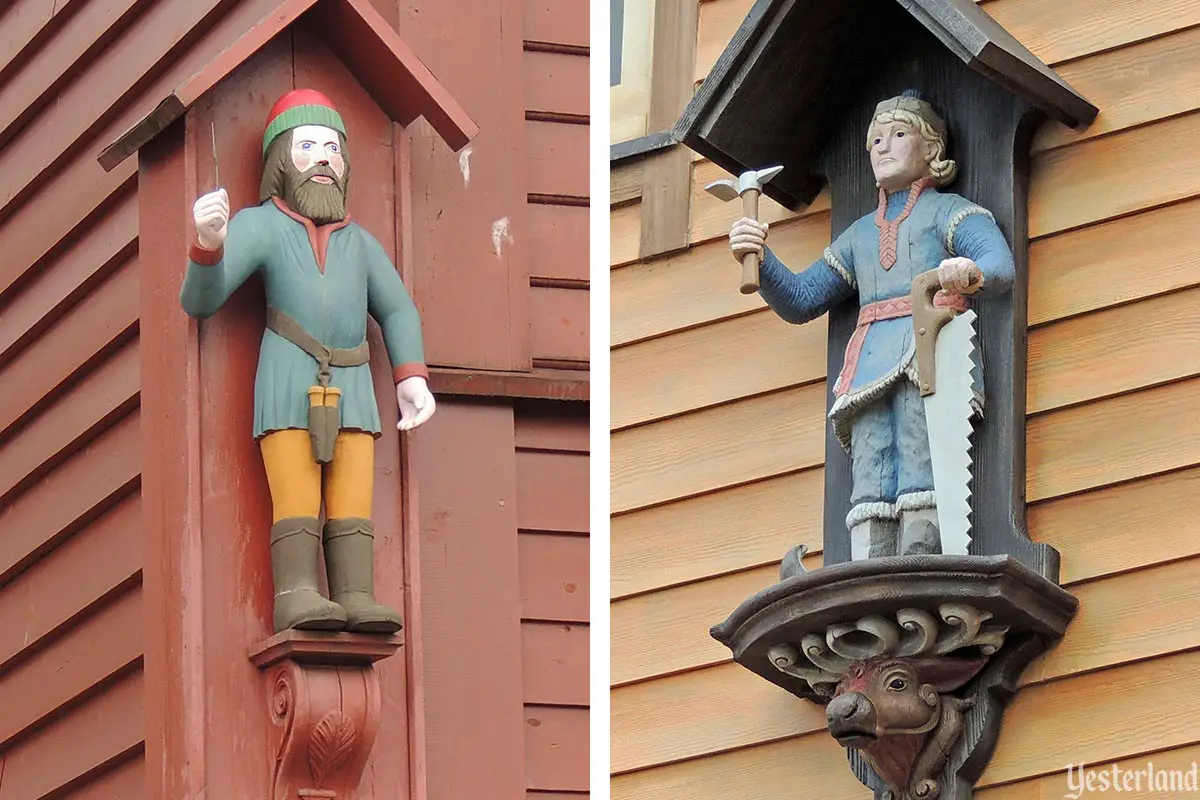
Two photos by Werner Weiss, 2016 |
|||
|
Yesterland recently took another look comparing Epcot’s Italy to Italy’s Venice. Today, we’ll visit another World Showcase pavilion with brilliant Imagineering work. I had the pleasure of visiting Norway—the real country and the World Showcase pavilion—in 2016. At that time, Norway was the newest World Showcase pavilion in two different ways. Norway opened in 1988, and no other real pavilion had been added since then. And, in 2016, Norway had the biggest enhancement to any World Showcase pavilion since Epcot Center (now Epcot) opened in 1982. Now that distinction belongs to the expanded France pavilion, with Remy’s Ratatouille Adventure opening October 1, 2021.
|
|||
|
|
|||
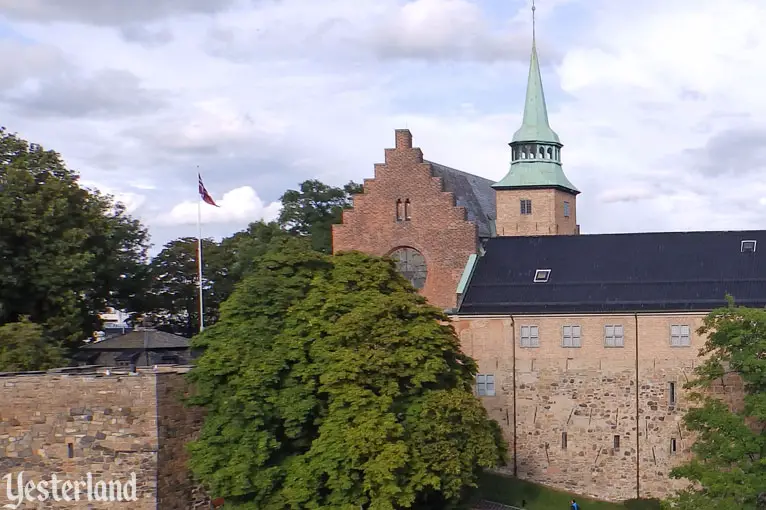
Photo by M(e)ister Eiskalt, 2014, WikiMedia Commons, Creative Commons Attribution-Share Alike license Real Norway: Akershus Castle and Fortress in Oslo |
|||
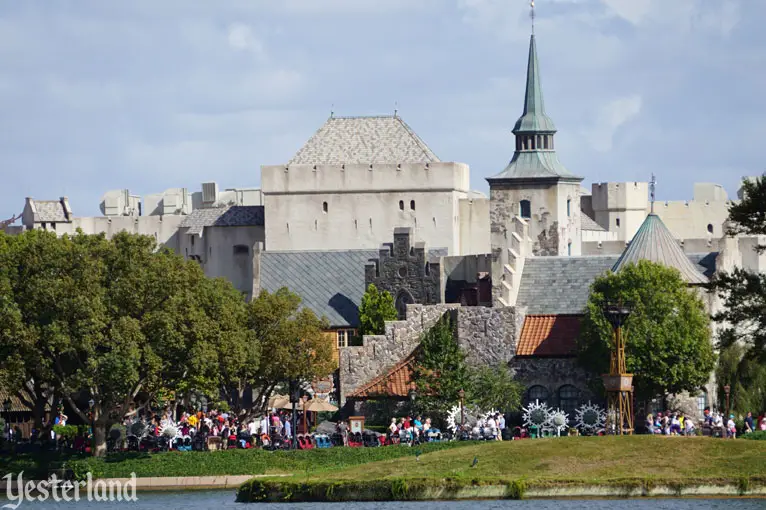
Photo by Werner Weiss, 2016 Norway at Epcot: The pavilion from across World Showcase Lagoon |
|||
|
Akershus Castle and Fortress (Akershus Slott og Festning in Norwegian) is a medieval royal residence and fortification on Oslo harbor. It dates back to 1299, and was heavily modified over the centuries by various kings. It’s now one of Oslo’s most popular visitor attractions. The photo above shows only a small part of it. A reduced-size replica of one of the towers at Akershus Fortress rises from the Norway pavilion at Epcot. Numerous architectural elements from Akershus have been re-edited for the exterior and interior of the pavilion’s main restaurant. |
|||
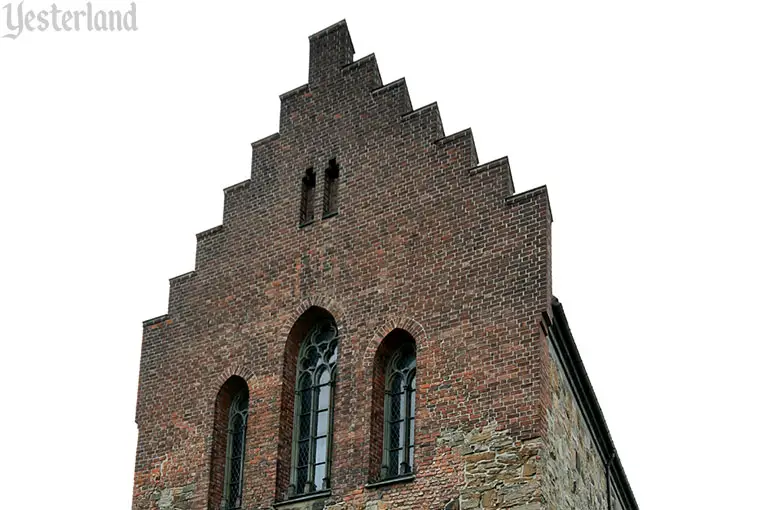
Photo by Mahlum, 2007, WikiMedia Commons, public domain Real Norway: A wall of the Great Hall at Akershus Fortress in Oslo |
|||
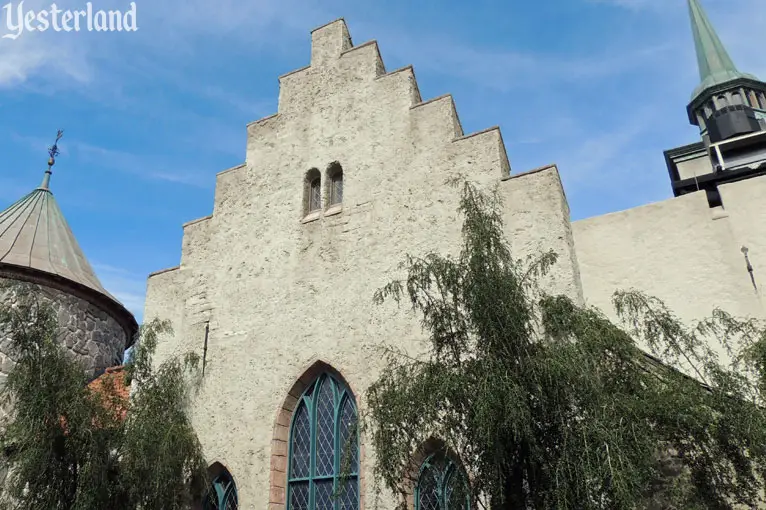
Photo by Werner Weiss, 2016 Norway at Epcot: Akershus Royal Banquet Hall, wall facing China |
|||
|
The name Akershus is familiar to Epcot guests because of the restaurant at Norway. Restaurant Akershus opened in 1988, serving a Norwegian koldtbord buffet. Princesses moved in for breakfast in 2002 and for other mealtimes in 2005, and it became Akershus Royal Banquet Hall. It’s been temporarily unavailable due to the COVID-19 pandemic. |
|||
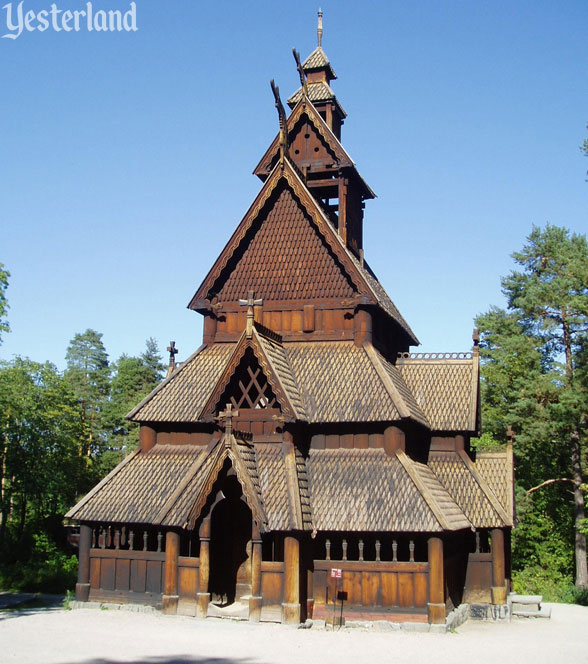
Photo by Steve Cadman, 2005, from WikiMedia Commons, Creative Commons Attribution-Share Alike license Real Norway: Gol Stave Church at Bygdøy, Oslo |
|||
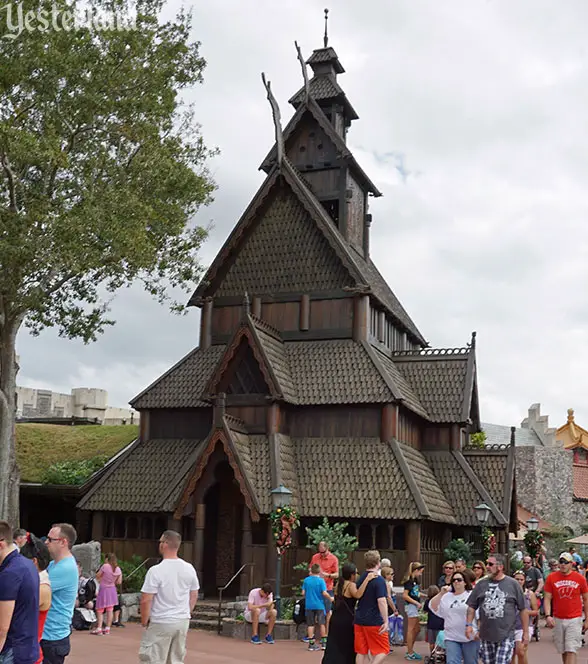
Photo by Werner Weiss, 2016 Norway at Epcot: Stave Church, featuring “Norsk Kultur” |
|||
|
The Gol Stave Church, dating from around 1200, was reconstructed in 1885 at what was then the Summer Residence of King Oscar II and is now the Norsk Folkemuseum, the Norwegian Museum of Cultural History. Located in Bygdøy, a part of Norway’s capital city Oslo, the museum includes a campus of 160 outdoor structures representing Norway’s regions and historical time periods. The reduced-scale replica at Epcot opened in 1988 as one of the original elements of the Norway pavilion. A past exhibit inside the Epcot version, “Norsk Kultur, Inspiration for Disney Frozen,” (Nov. 2013 – Mar. 2018) brilliantly demonstrated how World Showcase can use popular Disney fantasies to teach about authentic culture. |
|||
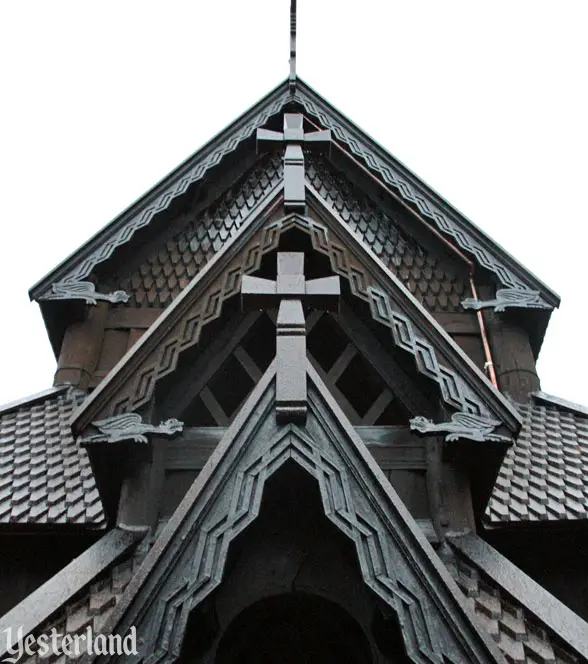
Photo by Erlend Bjørtvedt (CC-BY-SA), 2012, WikiMedia Commons, Creative Commons Attribution-Share Alike Real Norway: Architectural details on Gol Stave Church |
|||
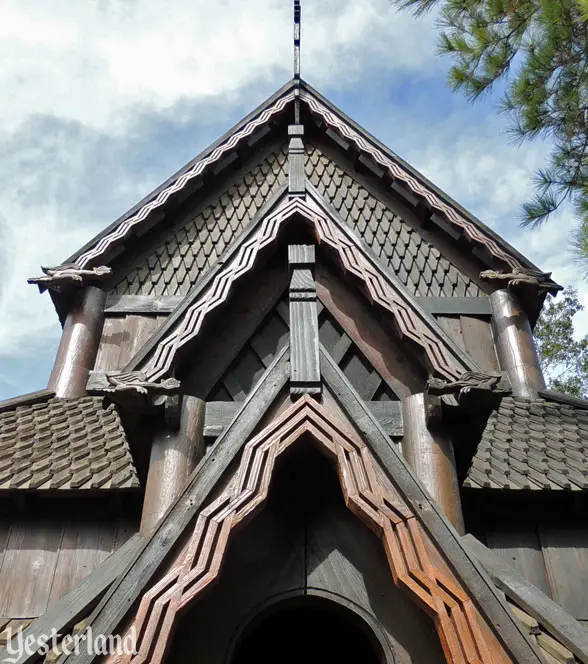
Photo by Werner Weiss, 2016 Norway at Epcot: Architectural details on the Stave Church |
|||
|
Although the historical Gol Stave Church is now a museum artifact, it served as an actual Christian church from around 1200 to 1880. Of course, the Epcot version has only been a theme park attraction, with no religious purpose. Befitting this distinction, the Epcot version does not have crosses on its exterior. In addition to the reduced-size replica at Epcot, there are two full-size replicas of the same stave church. One, built in the 1980s, is at Gordarike Viking And Family Park in Gol, Norway—the same town (but not the same site) where the original once stood. The other, dedicated in 2000, is at the Scandinavian Heritage Park in Minot, North Dakota. |
|||
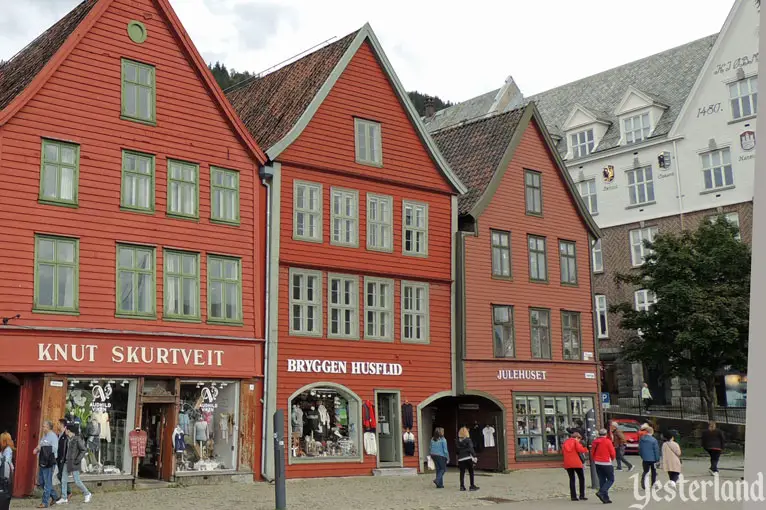
Photo by Werner Weiss, 2016 Real Norway: Bryggen wharf, Bergen |
|||
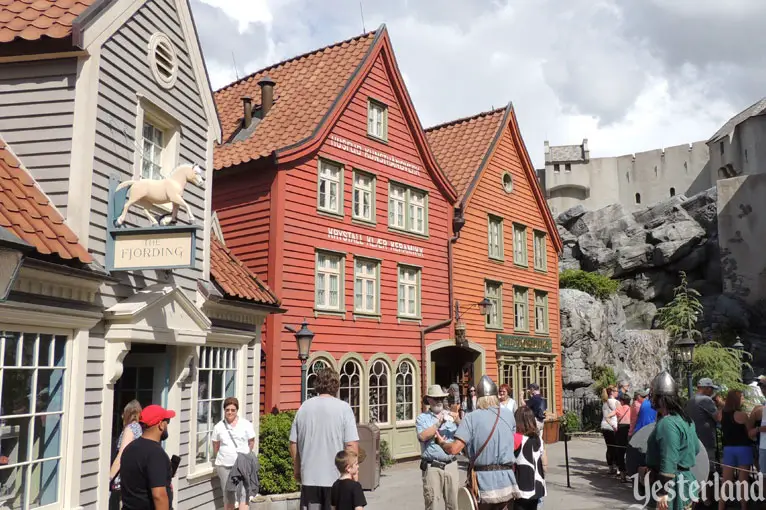
Photo by Werner Weiss, 2016 Norway at Epcot: Fjording and the Puffin’s Roost shops at the exit from Frozen Ever After |
|||
|
Bryggen is the historical Hanseatic wharf of Norways’s second largest city, Bergen. The long row of waterfront wooden buildings is a UNESCO World Heritage Site. Not surprisingly, it’s a popular tourist destination, home to shops selling Norwegian sweaters, troll toys, and Helly Hansen skiwear. At Epcot, Bryggen is reduced to two buildings, with architectural features from various others. To their left, another shop reflects the style of Old Stavanger, Norway. In addition to Frozen merchandise, the interconnected shops at Epcot sell Norwegian sweaters, troll toys, and Helly Hansen skiwear. |
|||
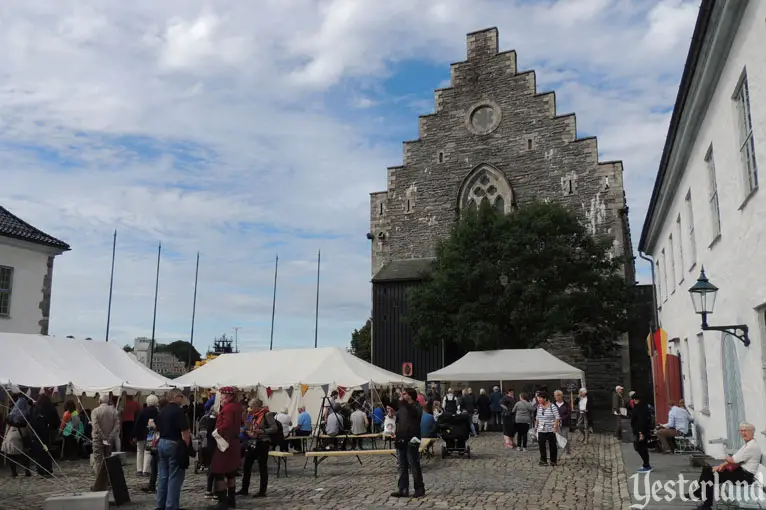
Photo by Werner Weiss, 2016 Real Norway: King Håkon’s Hall in Bergen |
|||
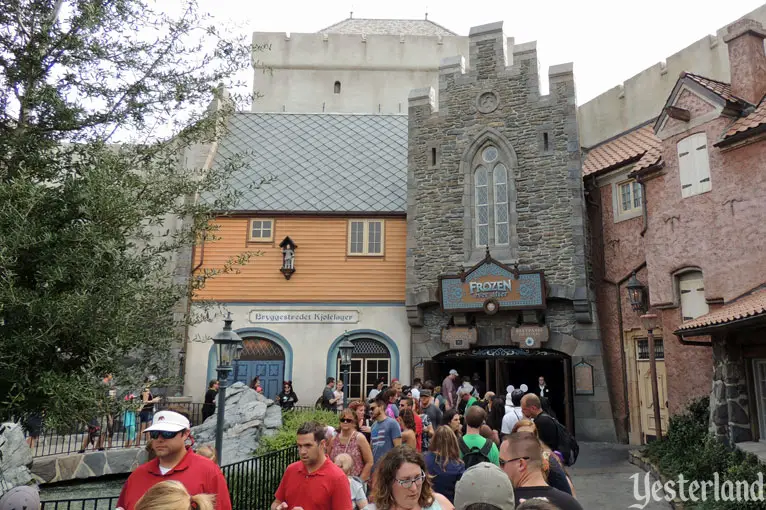
Photo by Werner Weiss, 2016 Norway at Epcot: Entrance to Frozen Ever After |
|||
|
King Håkon’s Hall (Håkonshallen) is a feast hall, built of stone during the reign of King Håkon Håkonsson (1217–1263). It’s part of the Bergenhus Fortress, adjacent to Bryggen, in Bergen, Norway. It’s still used today for concerts and other events. At Epcot, the entrance to Maelstrom looked like something from the Norwegian seaport of Ålesund. That changed when it was redone for Frozen Ever After. The ride entrance now resembles Håkon’s stone hall. Apparently, the old Maelstrom entrance was not regal enough or medieval enough for royal siblings Anna and Elsa. |
|||
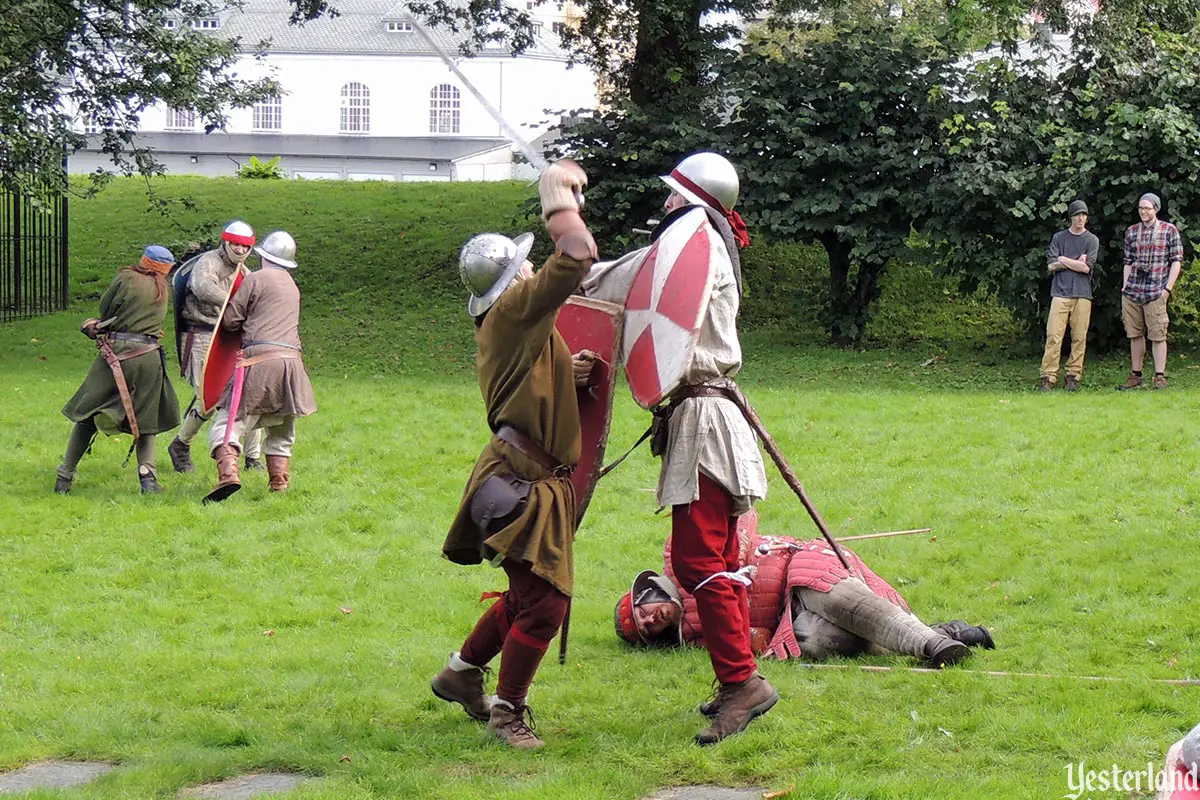
Photo by Werner Weiss, 2016 Real Norway: Battling Vikings |
|||
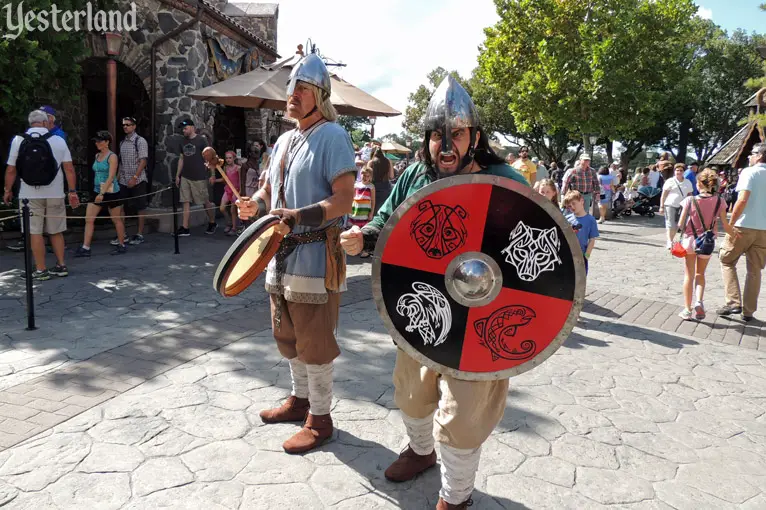
Photo by Werner Weiss, 2016 Norway at Epcot: Menacing Vikings |
|||
|
Do Vikings really fight each other in modern-day Norway? Yes—but only as reenactors at events such as the Historisk Festival at Bergenhus Festning in Bergen. Norway has not forgotten its Viking heritage. Before the pandemic, Epcot had Vikings wandering around the Norway pavilion, entertaining guests and posing with them. Let’s hope these Vikings return. |
|||
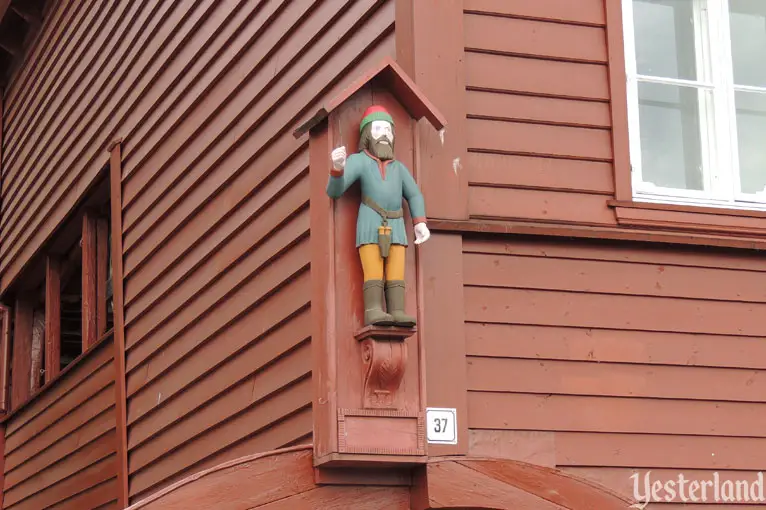
Photo by Werner Weiss, 2016 Real Norway: Carved wooden wood cutter at Bryggen |
|||
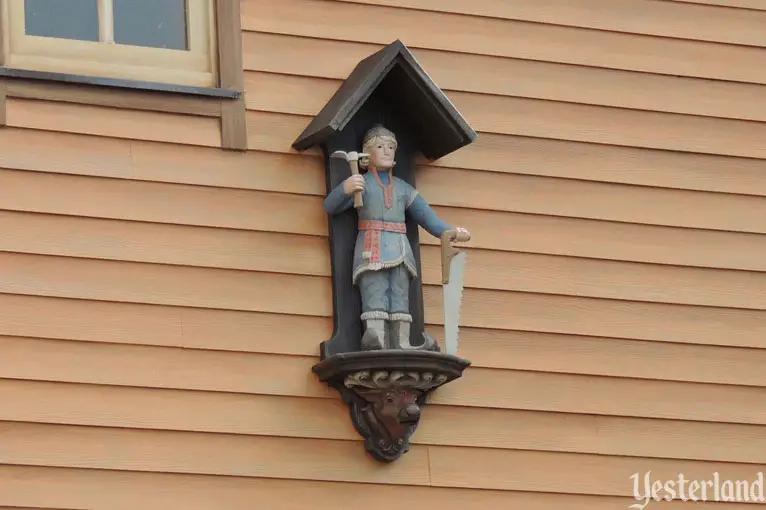
Photo by Werner Weiss, 2016 Norway at Epcot: Carved wooden Kristoff at Frozen Ever After |
|||
|
There’s artwork throughout Bryggen. Much of it suggests signage from a time before the masses could read and write. When Frozen Ever After moved into Epcot’s Norway, ice cutter Kristoff moved onto the façade to the left of the entrance. He bears a distinct resemblance to the wood cutter in Bryggen. |
|||
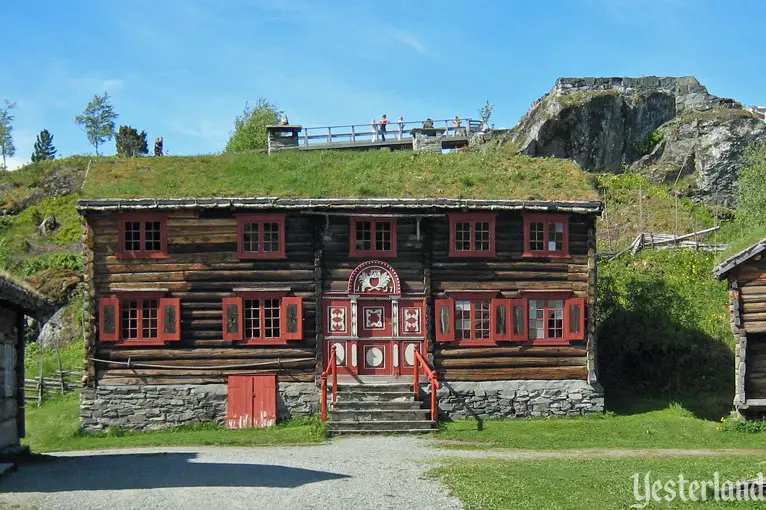
Photo by Sverre Stølen, 2007 Real Norway: Detli House at Sverresborg Trøndelag Folkemuseum, Trondheim |
|||
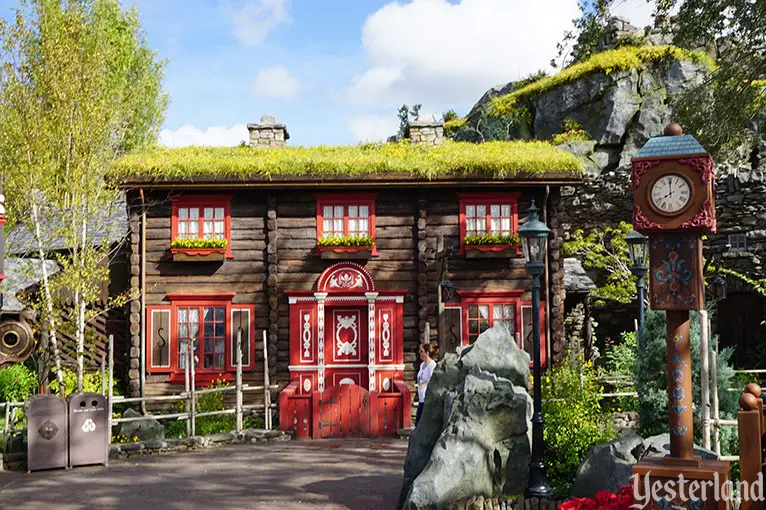
Photo by Werner Weiss, 2016 Norway at Epcot: Royal Sommerhus |
|||
|
The Sverresborg Trøndelag Folkemuseum was founded in 1909 to preserve the heritage of Norway’s Trøndelag region. The open-air collection has 80 vintage buildings. One of these is the Detli House, a residence built in 1817 and moved to the Folkemuseum in 1924. The expansion of the Norway pavilion at Epcot called for a character experience with Elsa and Anna. Instead of in a castle, it would take place in the summer cabin of the royal family, which, according to the backstory, Elsa and Anna had visited since they were children. Disney’s Imagineers searched Norway for authentic inspiration. The Detli House fit the bill perfectly. |
|||
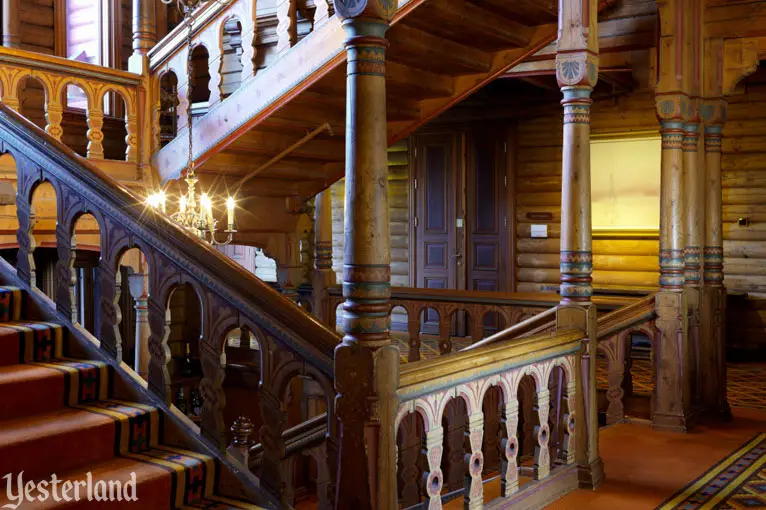
Photo © Scandic Hotels Real Norway: Interior stairway at the Scandic Holmenkollen Park Hotel, Oslo |
|||
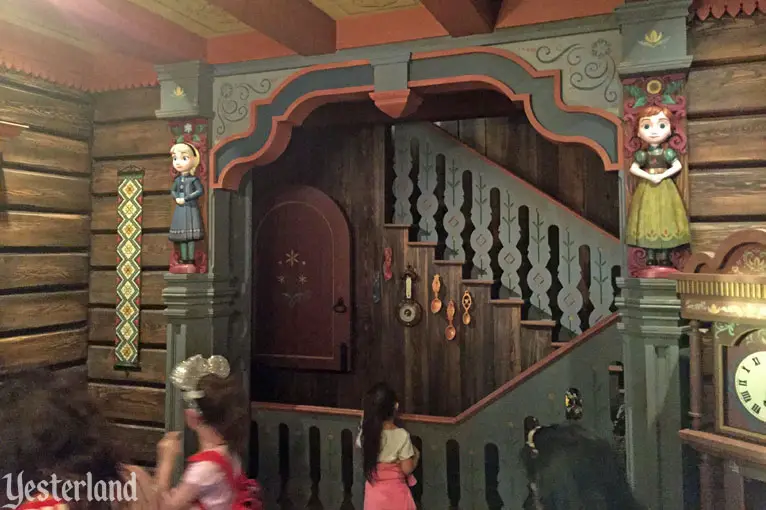
Photo by Werner Weiss, 2016 Norway at Epcot: Interior stairway at the Royal Sommerhus |
|||
|
Rosemaling is a form of traditional Norwegian decorative folk art. It typically involves patterns of flowers and scrolls on flat surfaces. The Scandic Holmenkollen Park Hotel in Oslo, originally built in the late 19th century as a sanatorium, is renowned for its Norwegian exterior and interior design. For the Royal Sommerhus, the Imagineers made extensive use of rosemaling—just as the artists behind the movie Frozen had done. An exhibit label in “Norsk Kultur” included this about rosemaling: “To help keep the characters and environments cohesive, rosemaling was incorporated into everything from architecture and furniture to embroidery, costumes, and even Elsa’s magic.” It’s now time to leave Norway—both of them. Ha det. |
|||
|
|
Click here to post comments at MiceChat about this article.
© 2017-2021 Werner Weiss — Disclaimers, Copyright, and Trademarks Updated September 10, 2021 |
||